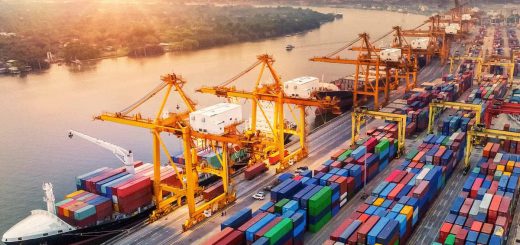Logistics Service Provider Contribution to OEMs Energy Transition
The global energy landscape is undergoing a significant transformation as countries strive to reduce their carbon footprint and shift towards more sustainable and renewable sources of energy. This energy transition is not only driven by environmental concerns but also by the need to secure a reliable and affordable energy supply for future generations. As part of this transition, original equipment manufacturers (OEMs) play a crucial role in developing and manufacturing clean energy technologies.
However, their success heavily relies on the support of logistics providers who ensure the efficient movement of equipment and components across the supply chain. In this article, we will explore how logistics providers are supporting OEMs in moving the mission of energy transition forward.
Strategies for OEMs Energy Transition
1. Supply Chain Optimization:
One of the primary challenges faced by OEMs in the energy transition is optimizing their supply chains to meet the increasing demands for clean energy technologies. Logistics providers are partnering with OEMs to develop customized supply chain solutions that streamline operations, reduce costs, and improve overall efficiency. This includes implementing advanced tracking technologies, optimizing transportation routes, and implementing inventory management systems to ensure the timely delivery of components and equipment.
2. Sustainable Transportation:
Logistics providers are embracing sustainable transportation solutions to support the energy transition. By investing in electric vehicles, biofuels, and other clean technologies, they are reducing their carbon emissions and aligning their operations with the goals of OEMs. Moreover, logistics providers are actively exploring alternative modes of transportation such as rail and waterways, which offer lower carbon footprints compared to traditional road transport.
3. Warehousing and Distribution:
Efficient warehousing and distribution play a crucial role in the success of OEMs in the energy transition. Logistics providers are investing in state-of-the-art warehouses that are equipped with advanced technologies to optimize storage space, facilitate inventory management, and improve order fulfillment processes. By leveraging automation, robotics, and artificial intelligence, logistics providers ensure faster and more accurate order processing, reducing lead times and improving customer satisfaction.
4. Last-Mile Delivery:
The last-mile delivery is a critical component of the supply chain that often presents challenges in urban areas. Logistics providers are collaborating with OEMs to develop innovative last-mile delivery solutions that are not only efficient but also environmentally friendly. This includes utilizing electric vehicles and bicycles for urban deliveries, implementing micro-fulfillment centers, and partnering with local distribution networks to reduce the distance traveled and carbon emissions associated with last-mile delivery.
5. Reverse Logistics:
As the energy transition progresses, OEMs face the challenge of managing end-of-life products, recycling, and disposing of components and equipment responsibly. Logistics providers are stepping up to support OEMs in implementing effective reverse logistics processes. By establishing take-back programs, managing recycling centers, and partnering with specialized recycling facilities, logistics providers ensure the proper disposal and recycling of components, reducing environmental impact and contributing to a circular economy.
6. Risk Management and Compliance:
The energy transition introduces new risks and compliance requirements for OEMs. Logistics providers are working closely with OEMs to navigate these challenges and ensure compliance with regulations related to the transport, storage, and handling of clean energy technologies. By providing expertise in risk management, regulatory compliance, and safety standards, logistics providers are enabling OEMs to focus on their core competencies while ensuring a seamless and compliant supply chain.
Also Read:- What Sets a 3PL Provider Apart from a 4PL Provider?
Conclusion:
The energy transition presents both opportunities and challenges for OEMs in the clean energy sector. Logistics providers play a crucial role in supporting OEMs in moving the mission forward by optimizing supply chains, embracing sustainable transportation, improving warehousing and distribution, innovating last-mile delivery, managing reverse logistics, and ensuring compliance.
By partnering with logistics providers, OEMs can focus on their core business of developing and manufacturing clean energy technologies, confident in the knowledge that their supply chains are efficient, sustainable, and aligned with the goals of the energy transition. Together, OEMs and logistics providers are paving the way towards a cleaner and more sustainable future.




Recent Comments